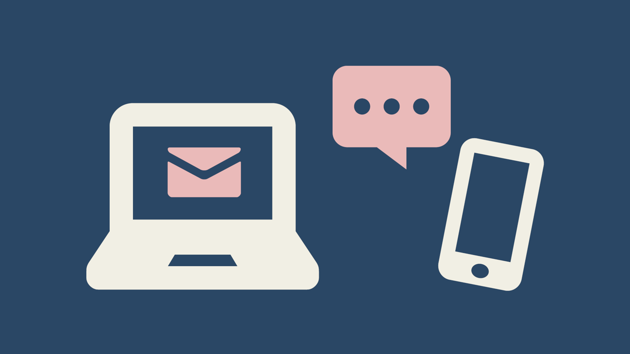What is ergonomics?
Ergonomics is working and using your body in a way that prevents overloading injuries, and refers to the collaboration between humans, their tasks and the environment.
Ergonomics when studying
Many students often spend their study periods in front of a laptop. If you stay seated for a long time, there is risk of aches and tensions in the head, neck, shoulders and back, which is often due to the screen being positioned too low. Also your eyes can be strained. The human body is not adapted to sitting still for long periods, but fares well from movement and variation.
Another risk factor is cognitive overload, which means that the brain is trying to cope with too many impressions at the same time, which could cause stress or problems with attention and memory.
Research has shown that nearly all people are affected negatively by shifting focus between various impressions and tasks. The brain needs a certain amount of time to adjust from, for instance, checking social media to concentrating on the study task again. The learning process is worsened when you shift focus often since the brain is not given the chance to create long-term memories of what you read.
Ergonomic tips for students
- Create peace and quiet by planning and structuring your studies.
- Find a calm place in which you feel at ease and can work undisturbed.
- Take on one task at a time.
- Put away your mobile phone, in another room if possible, when you are studying. You do not need to be accessible all the time. Agree on phone times if necessary.
- Put your laptop on a stand, a pile of books or similar and use a separate keyboard and mouse. This will give you a much better head and neck position.
- Make sure your feet are supported when you sit down. Use a footstool or footrest if you cannot reach the floor.
- The top of the screen should be in your eye height so your vision points slightly downwards. The screen should be at an arm’s length from the eyes. Avoid glare and reflections from light sources by having any potential windows on your side. Enlarge the text if you notice that you push your head forward to see better.
- Rest your underarms and hands against the table or armrest of a chair, and have the elbows at a 90-degree angle.
- If you are using a mouse, place it close to your body and avoid the arm getting too far forward, away from the body, or for the underarm to bend outwards.
- Stand up and work for parts of the day if you can. Distribute your weight evenly on both legs and feet with a slight emphasis on the forefoot. Avoid pressing your knees backwards into a locked position. Shake your legs loose once in a while.
- Move around and stretch around a few minutes every half hour. Find a pause programme you like or set up your own routine.
Learn more about computer and screen work (Swedish Work Environment Authority).
Individual counselling and advice for a healthy physical and mental work environment during screen work
Individual counselling – make an appointment with Anita Karlsson, Physiotherapist, at the Student Health Service.



